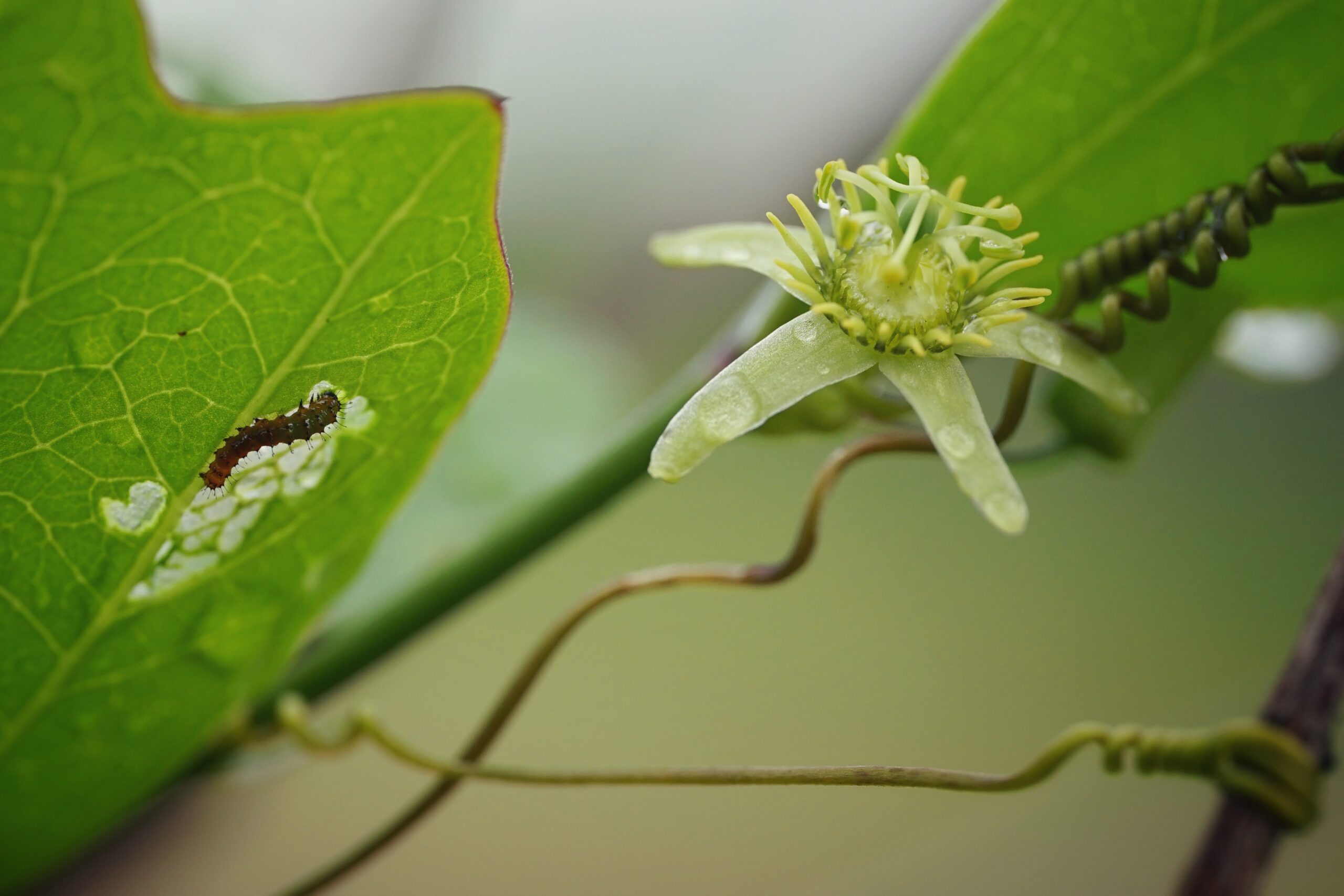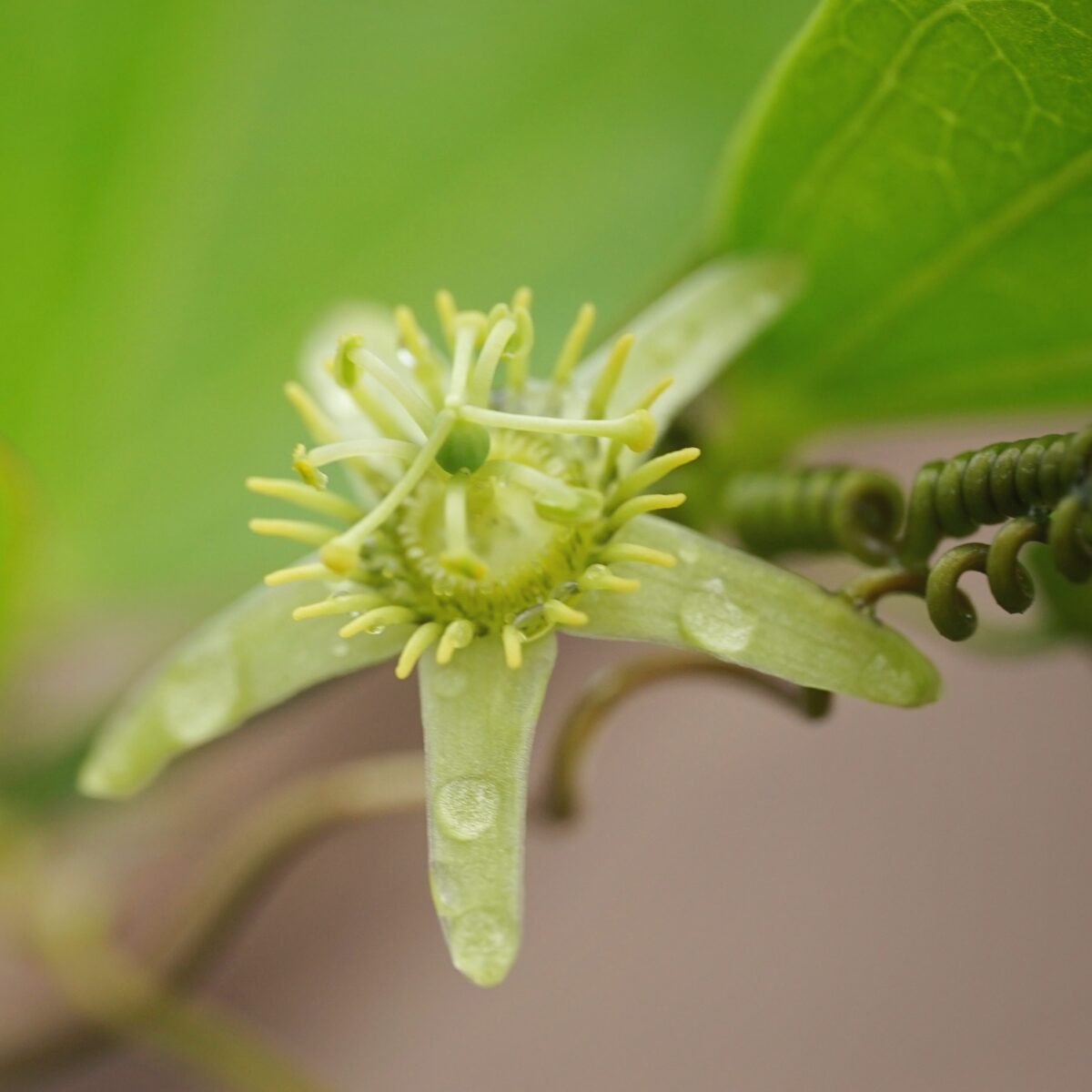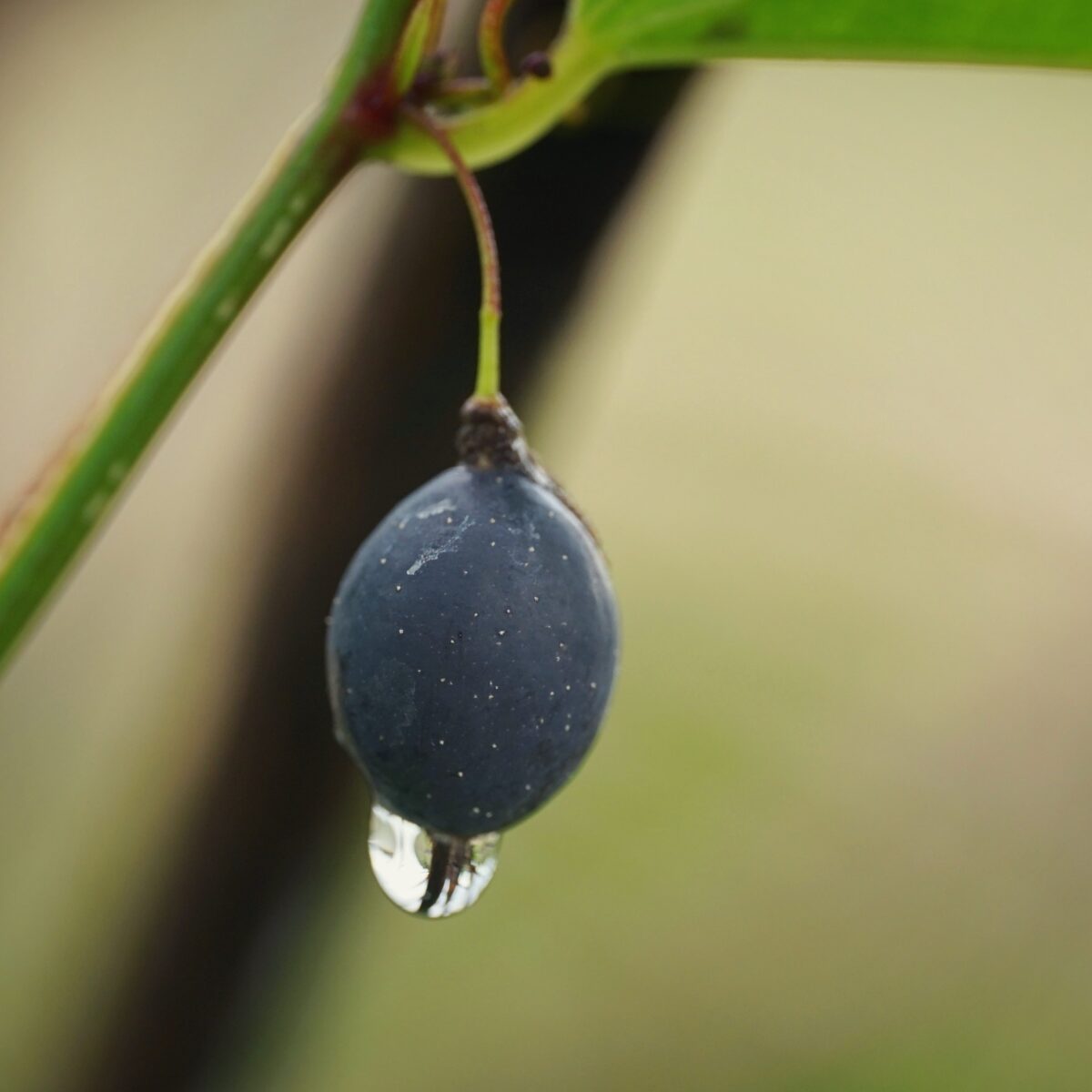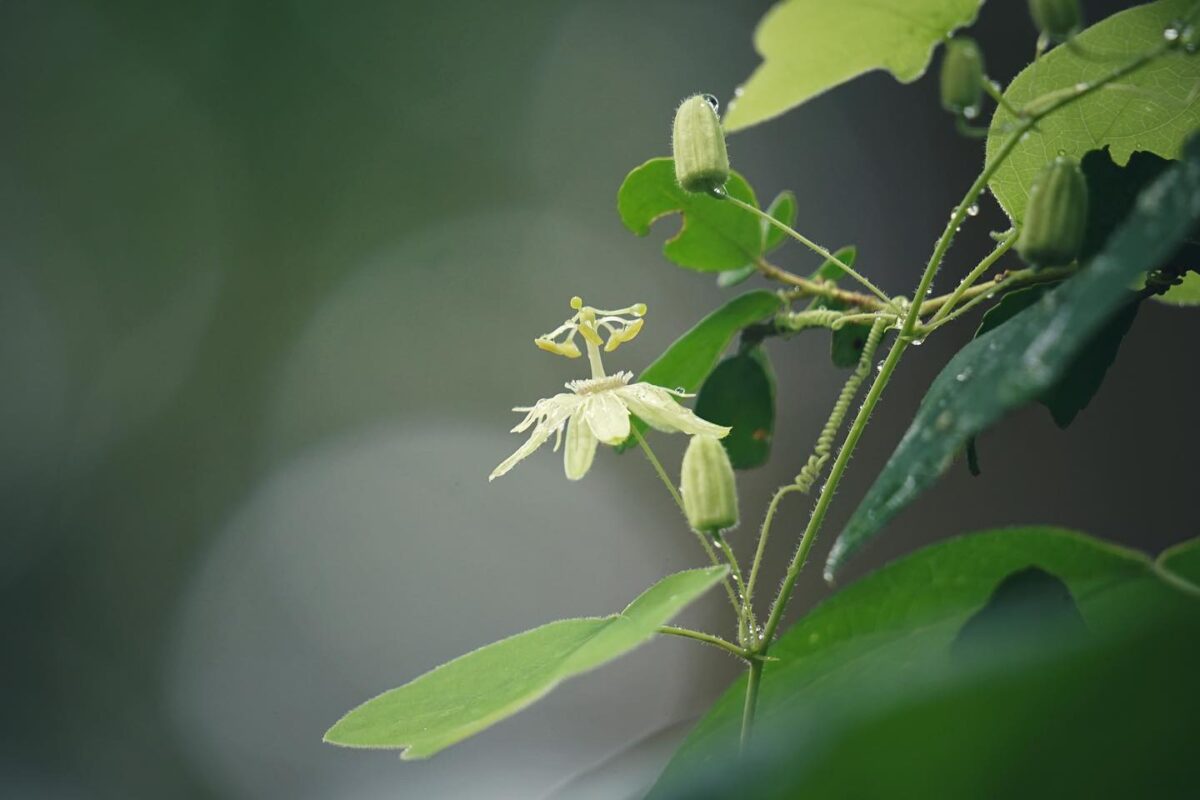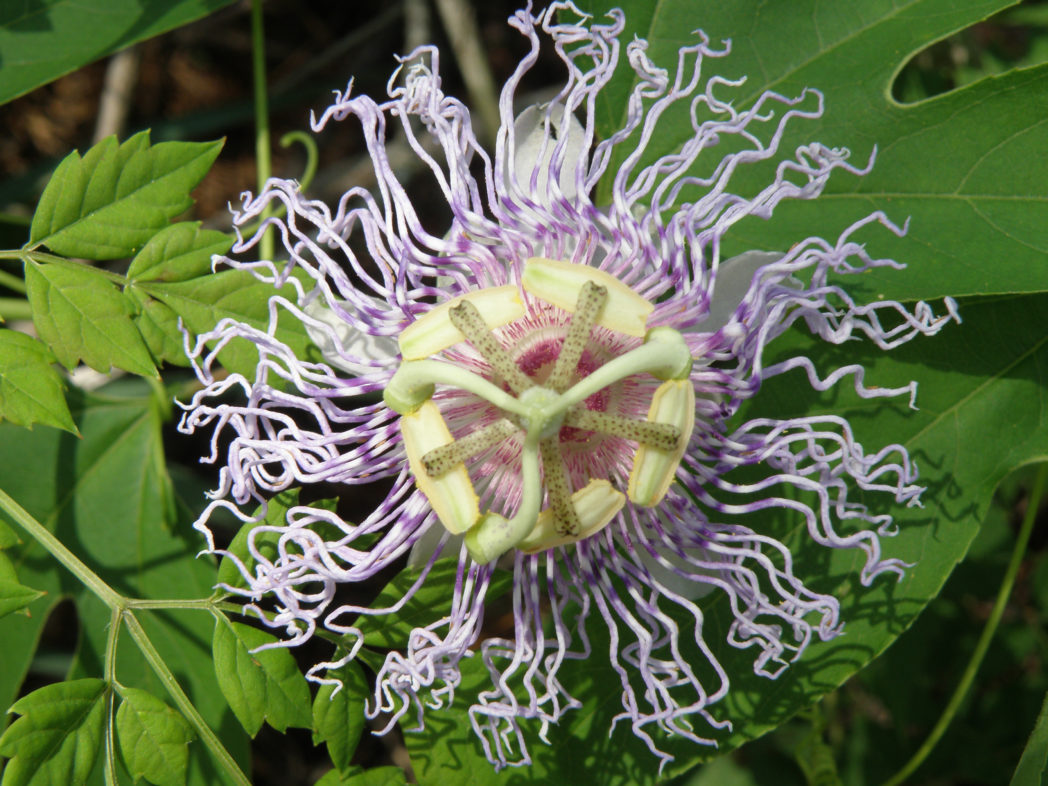Corkystem passionflower
Pictured above: Corkystem passionflower (Passiflora suberosa) by Emily Bell. Click on terms for botanical definitions. View post as a PDF.
While Corkystem passionflower (Passiflora suberosa) may not have the showiest flowers in its family, it is known for being one of the best at attracting butterflies! This low-growing vine can be found in moist forests, pinelands and coastal uplands throughout much of peninsular Florida and the Keys. It is a larval host for Zebra longwing (Heliconius charitonius), Gulf fritillary (Agraulis vanillae) and Julia (Dryas iulia) butterflies. Its flowers support native bees — its primary pollinator — and its fruits are eaten by birds. The ripened fruits are also technically edible for people, but reportedly do not have an appealing flavor.
The greenish-yellow flowers are dime sized and actually lack petals but have five sepals. The corona has short yellow filaments that may be dark purplish at the base. The operculum may be light yellow green to dark purplish. In the center of the flower, a globose light green ovary is topped with whitish to light yellow-green styles with light yellow stigmas. The plant’s small fruits start out green and ripen into a dark purple or almost blue-black color. The leaves are alternate and highly variable. A single plant can have leaves that range from entire to three-lobed and the lobes can vary greatly in depth. The common name, Corkystem, references the stems that change from green to tan, woody and winged with maturity.
The common name Passionflower comes from a deep tie to Christian symbolism in which the different components of the flower are symbols of the Passion of the Christ.
Family: Passifloraceae (Passionflower family)
Native range: Peninsular Florida
To see where natural populations of Corkystem passionflower have been vouchered, visit florida.plantatlas.usf.edu
Lifespan: Perennial
Soil: Dry to moist sand or loam
Exposure: Full sun to part shade
Growth habit: Vine with climbing stems reaching up to or over 15 feet long
Propagation: Seed, cuttings
Florida regions of landscape suitability: North, Central, South
Garden tips: A fantastic addition to any pollinator garden, Corkystem passionflower can be used as a groundcover or a climbing vine on a trellis or tree. It does require regular watering when first planted, but once established, it can handle dry soil and is very drought tolerant.
Corkystem passionflower is available from nurseries that specialize in Florida native plants. Visit www.PlantRealFlorida.org to find a nursery in your area.
Learn more about Corkystem passionflower from the Florida Native Plant Society and the Institute for Regional Conservation.
For information on other Passiflora species, see:

